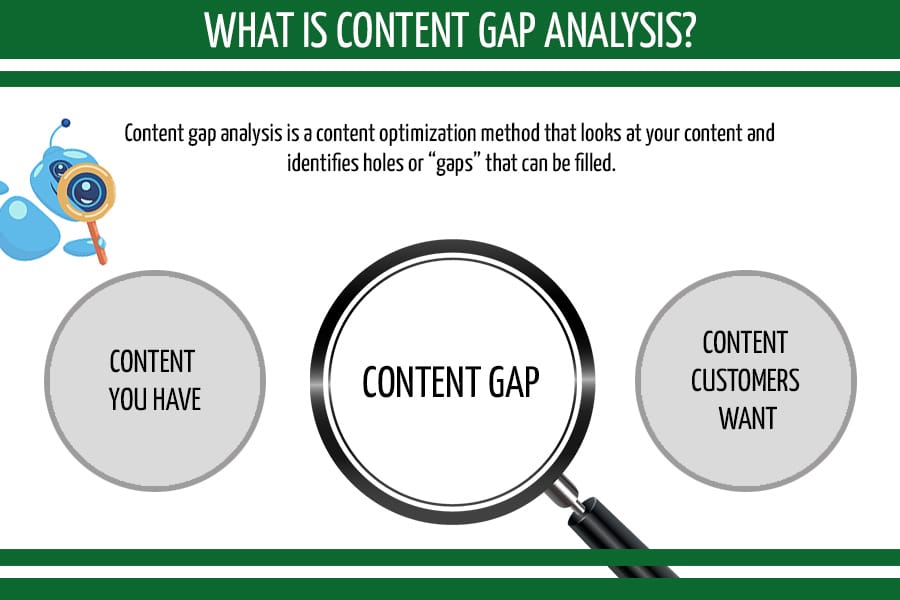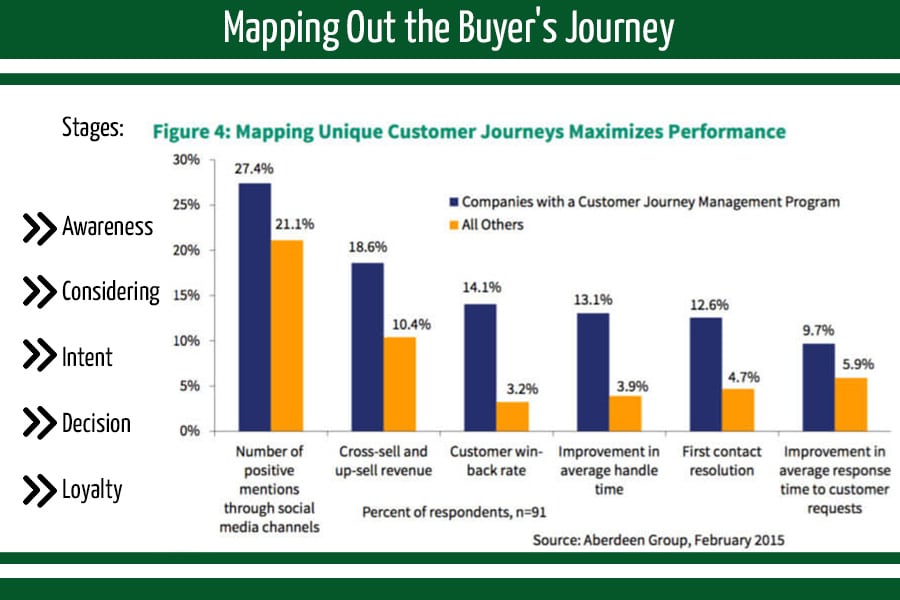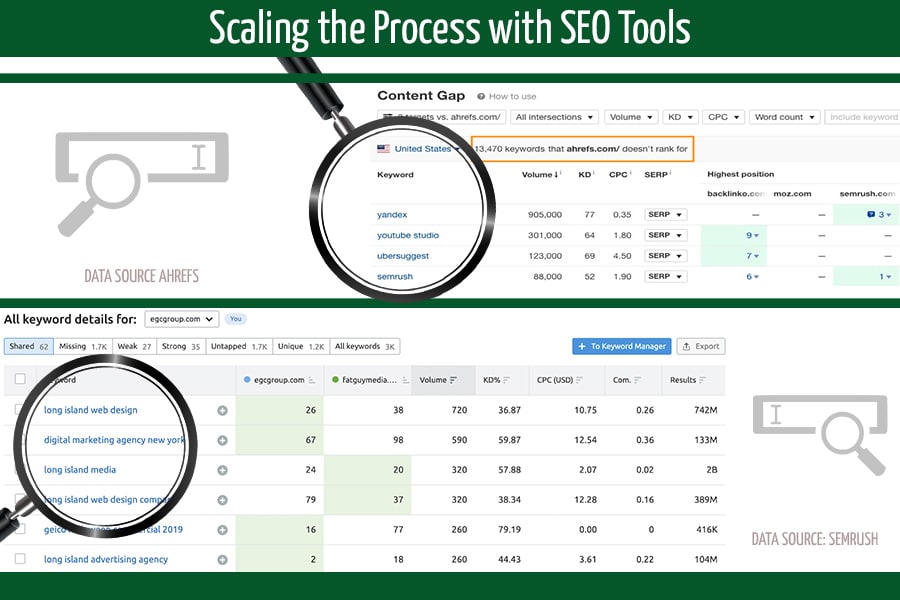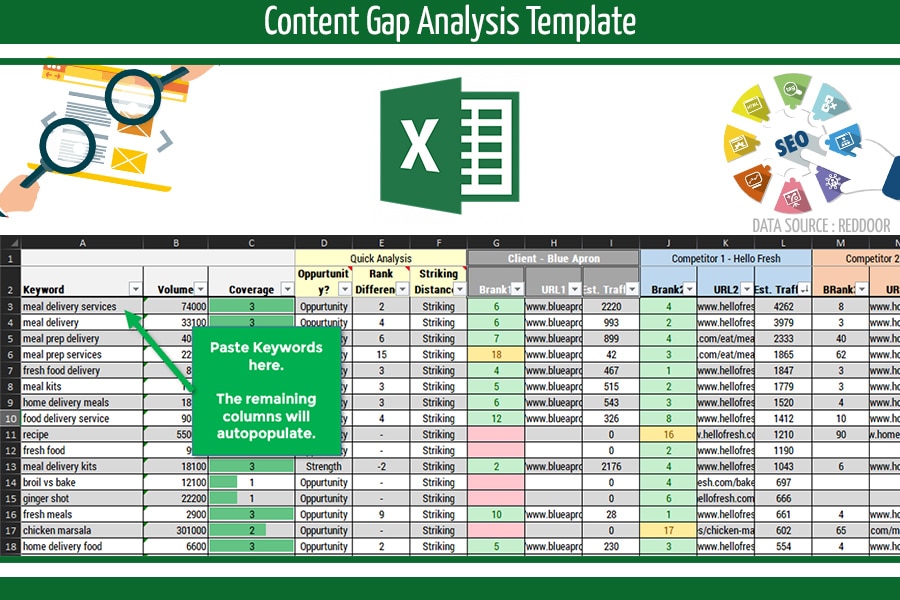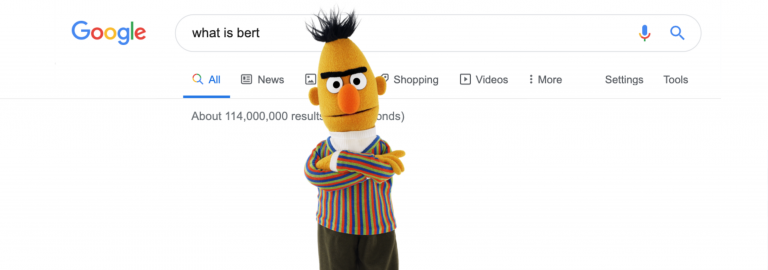Even if it’s not your primary goal, every webmaster knows SERP rankings matter. However, getting your site to the first page of Google takes time, effort, and a strategic approach.
So, what is content gap analysis and how does it fit into this scenario?
Content gap analysis is a content optimization method that looks at your content and identifies holes or “gaps” that can be filled. This is a clever way of recognizing opportunities where you can increase search engine rankings and overthrow competitors’ high traffic.
To help you do just that, read on to learn how to do a content gap analysis and implement it in your SEO strategy.
How to Do Content Gap Analysis
Simply put, a content gap analysis is a process of identifying missing content from your site. However, “missing content” can mean many things and there are a couple of ways to go about finding it. So, SEO content gap analysis will involve multiple steps and an audit of your site.
Let’s have a look at the whole approach from top to bottom.
1. Know Your Business Objectives and Consumers
Before you start examining actual content you need to have an action plan in place, you first need to know the purpose of your content, who it’s targeting, and the precise reason you’re performing the gap analysis.
Goals
You want to improve your material, but to what end? Are your pages not showing up in relevant search queries, or are they not ranking high enough? Do you want to increase traffic, or convert more of your current traffic to purchases? If you don’t know what your key focus is, you’ll have a hard time improving results in specifically that area. (traffic, search engine rankings, conversion rates, etc.).
Target Audience
Marketing strategies work well when they are personalized, so while you want to cast a wide net, you can’t cover everyone. Explore who your audience is in terms of both demographics and psychographics. When you analyze content, pay attention to what your audience suggests they want, not just what you think they do.
2. Mapping Out the Buyer’s Journey
Before someone becomes a regular customer, they go through different stages:
- Awareness
- Considering
- Intent
- Decision
- Loyalty
After you’ve considered both your target audience and content goals, you can map out the buyer’s journey. Once you have this, check if you have suitable content for each step of the way.
3. Content Audit
An overview of your site can help you determine if your content sufficiently meets the needs of your customers. Are you covering all the topics that you should be?
To do that, you need to dig deeper than scraping the surface. Just because you have content on a subject, doesn’t mean it’s optimal. Do a content audit to see how well your pages are performing. You can look at things such as SERP positioning, monthly traffic, and click-through rate.
High-performing content may not need any attention, however, lower-performing pages can be improved. Improving can mean updating old content, or enhancing the material. You may have two or more pages that are competing among themselves for search engine rankings.
In this case, they can be consolidated into one piece.
4. Competitor Analysis
Finding competitors can be done by googling your target keywords and seeing the pages that come up. Usually, you’ll have an idea of competitor sites already, but this is a good way to see what’s actually ranking the highest.
You can also comb through the sites that come out on top of search engines. Find out if there are any topics they’re covering that you’re not, or if there are areas you could improve on. You may also find your competitor’s content lacking certain information, allowing you to fill that niche.
5. Scaling the Process with SEO Tools
While you can manually search for content gaps, this process has been made massively easier with the use of various online tools. These are especially helpful when it comes down to detailed keyword research. If there are any keywords you don’t rank for, but your competitors do – SEO content gap analysis tools can help you identify them.
Scaling Content Gap Analysis – SEMRush
SEMRush is one of the most popular SEO tools and offers a wide range of features. It provides recommendations on how to improve your site but also gives an in-depth overview of your competitors’ performance.
You can extract many uses with the Semrush content gap analysis tool. The topic research option and keyword gap tool can make gap analysis magnitudes simpler.
Detailed keyword research helps you dig into keywords at the click of a button. You can view how a site’s keyword profile intersects with competitors’ and see which phrases are shared, missing, weak, strong, untapped, or unique.
Scaling Content Gap Analysis – Ahrefs
An Ahrefs content gap analysis can accomplish the same thing as SEMRush’s keyword gap tool. It helps locate competitors, shows you their ranking keywords, and compares them to the ones on your site.
With Ahrefs, you can also filter based on many factors and view data in terms of keyword intersection, search volume, difficulty, and more. It’s one of the top most useful SEO tools available.
Scaling Content Gap Analysis for Free
There are a variety of other tools that serve a similar purpose, but they all come with a price tag. However, you’ll be happy to hear that you can find a free content gap analysis tool to make the process easier.
None will be as efficient and easy to use as paid software, however, they’re a great start if you’re not sure if investing in these SEO tools will be worth it.
For starters, the content gap analysis SEMRush platform does offer a free tier. If you sign up for their site, you can get limited use of their services. You could also take full advantage of the software with a 7-day free trial, however, that will require you to put in your banking information.
We’ve already mentioned some ways you can manually gather data, such as by entering keywords into search engines. You can also perform a keyword gap analysis using Google Search Console.
To do a more advanced content gap analysis using these free methods you can use excel or google sheets and input relevant data you’ve gathered. After all, tools like Afrefs and SEMRush simply automate a process that you can perform manually using these programs.
Content Gap Analysis Tips & Best Practices
As explained, content gap analysis involves many essential steps. While they’re all important to your content-building strategy, there are a few things you may want to pay special attention to.
Analyze Google’s Top Search Results
To rank among the top pages on Google means to overtake another page’s spot. So, you have to produce content that’s more informative, thorough, and capable of ranking higher than what’s already there.
You don’t need to do a complete competitor analysis for this, you can simply try finding topic gaps that you can fill in.
Improve Your Own Content
A content audit is a necessary part of gap analysis. However, simply checking your pages isn’t enough – you need to fill those potential gaps as well.
You can’t simply throw out content and be done with it. It needs to be meaningful, informative, but also fresh and current. Sometimes, all a page needs to improve performance is simple tailoring of what you already have, content-wise.
Use SEO Tools
Performing an advanced content gap analysis is a click away with the SEO tools we mentioned. It may take a while to familiarize yourself with all the features, but once you get a grip on how they work, these programs will be an invaluable asset to your SEO strategy.
Target Long-tail Keywords
While focusing on short and popular keywords may seem like the way to go, long-tail keywords tend to have less competition. You can take advantage of this and achieve a better ranking than sites only using generic target phrases.
Content Gap Analysis Template
Using a content gap analysis tool like Ahrefs or SEMRush can immensely help you analyze your content. However, as we said, they’re automating a process that was already available to experienced Excel users.
You can grab a content gap analysis template for either Excel or Google sheets and fill in the data yourself. This serves the same purpose, but is free of charge, albeit a more complex process.
Along with a blank template, you can also download an excel content gap analysis example to more easily understand how it works and where information needs to be entered.
Role of Content in SEO
When we conduct a content gap analysis, SEO is a key factor to keep in mind. That’s why we spend as much time on keyword gap analysis as we do on topic gaps.
So, say you’re producing great content, but other sites still rank higher in search engine results. Well, it’s not enough to be “great”, you need to cater to what the search engine wants – and you need to do it better than competing sites.
A content gap analysis helps you figure out how to do this. Your content should not only be high quality and informative but also read well and target the right audience with the proper keywords.
There’s no shortage of content on the internet, but using strategic tactics in your SEO – like gap analysis – can help you come out on top.
Final Thoughts
When it comes to SEO, content gap analysis is one of the top demands on the list, so it’s crucial to know what it is and how it’s done. Checkout content marketing services by SEOReseller.
However, if it seems like a lot of work for you to do alone, you can always get a helping hand from professionals in achieving a higher SERP ranking.
